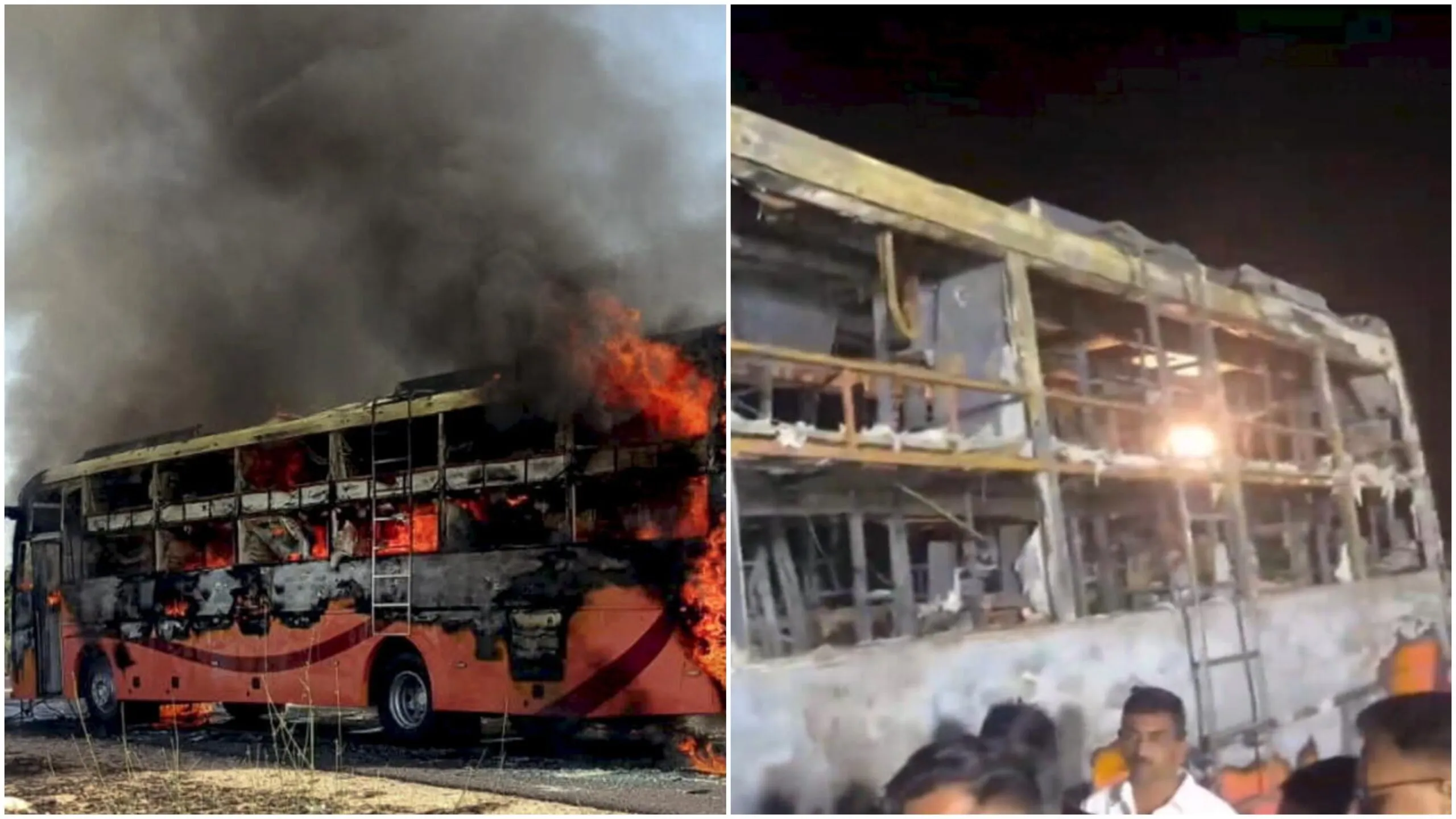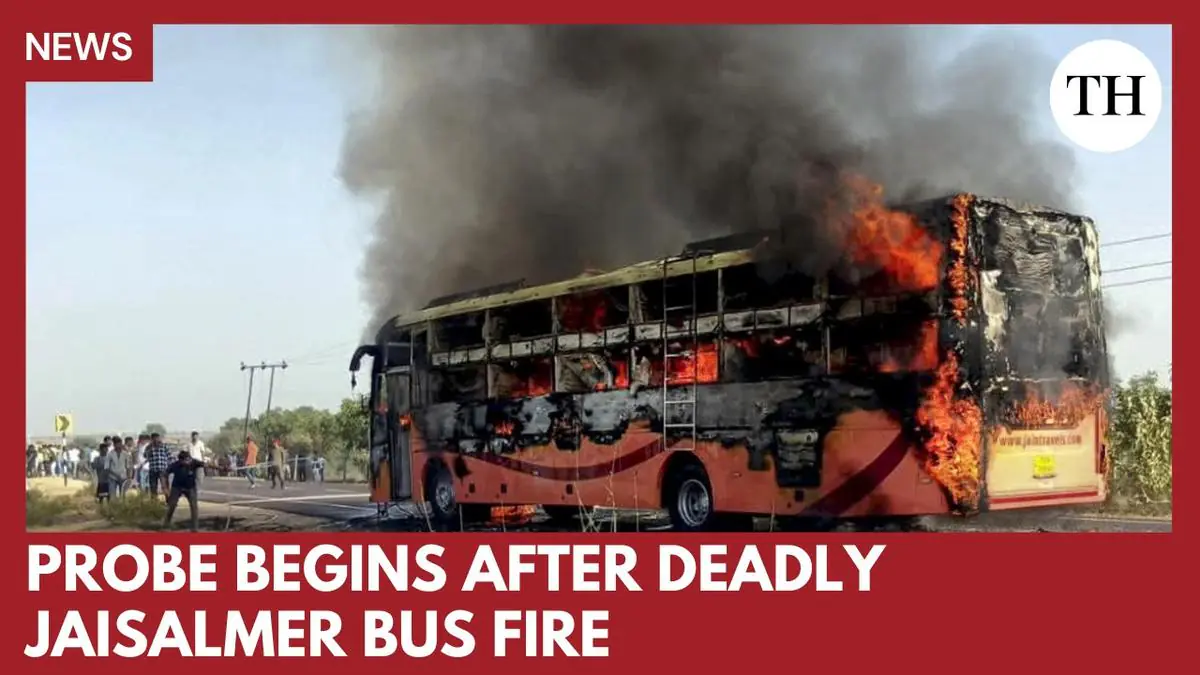Jaisalmer bus fire on October 14, 2025, a devastating fire engulfed a private sleeper bus traveling from Jaisalmer to Jodhpur, near Thaiyat village in Rajasthan. The inferno claimed the lives of 21 passengers, including three children, and left 16 others critically injured. This tragedy has raised serious concerns about bus safety standards, regulatory oversight, and the dangers of unauthorized vehicle modifications.

https://en.wikipedia.org/wiki/2025_Jaisalmer_bus_fire
Manipur Violence 2025: Complete Update on the Ongoing Crisis
Japan Earthquake 2025: Shocking Facts, Viral Rumors & the Real Risk of a Megaquake
₹300 crore Ponzi scam in Maharashtra: The Full Story of Selva Kumar Nadar
🚍 The Incident
Jaisalmer bus fire involved was a newly purchased vehicle, which had been converted from a non-AC to an AC sleeper model just five days prior to the accident. It was carrying 57 passengers when the fire broke out shortly after departure from Jaisalmer.
Eyewitnesses and preliminary investigations suggest that the fire likely started due to a short circuit in the air-conditioning system, which may have triggered a gas leak. Flames spread rapidly throughout the bus, trapping passengers inside (Times of India).
Tragically, the Jaisalmer bus fire had only one emergency exit, which was found to be jammed during the fire. Some passengers attempted to escape by breaking windows, while others were assisted by the bus conductor, Rafiq Khan, who sustained burns while helping passengers to safety (Indian Express).
⚠️ Unsafe Modifications and Regulatory Lapses
Investigations revealed that the bus had been illegally modified. Although registered as a non-AC vehicle at the Chittorgarh Regional Transport Office (RTO), it had been covertly converted into an AC sleeper bus without proper authorization or safety inspections (Times of India).
These unauthorized modifications not only violated safety norms but also compromised the structural integrity and emergency evacuation capabilities of the bus. In response, two officials from the Chittorgarh RTO were suspended for their negligence in approving the bus’s fitness despite its modifications (Times of India).
🧬 Identification Challenges
The severity of the fire left many victims’ remains unrecognizable. Authorities initiated DNA sampling to identify the deceased and provide closure to grieving families. As of the latest reports, two victims had been identified, and their bodies were handed over to their families (Times of India).
🕊️ Victims and Survivors
Among the deceased was Mahendra Meghwal, a newly appointed defense serviceman, traveling with his family to celebrate Diwali. Tragically, he, his wife, and three children perished in the blaze. His elderly mother is still unaware of the loss, awaiting the arrival of his brother from Oman to perform the last rites (Times of India).
Survivors, including Peer Mohammad and conductor Rafiq Khan, shared harrowing accounts of the incident. Despite their injuries, their quick thinking and bravery saved lives. Many have, however, criticized the delayed medical response and the lack of immediate evacuation measures, which may have contributed to the high death toll.
🏛️ Official Response and Compensation
Jaisalmer bus fire Prime Minister Narendra Modi expressed deep sorrow over the incident and announced an ex-gratia of ₹2 lakh for each family of the deceased (Mathrubhumi).
The Rajasthan government has pledged to review and strengthen bus safety regulations to prevent such tragedies in the future. Officials emphasized stricter compliance checks and enforcement of safety measures for private bus operators.
🔍 Lessons and the Way Forward
The Jaisalmer bus fire serves as a grim reminder of the importance of:
Adhering strictly to safety standards in public transportation.
Ensuring proper authorization for vehicle modifications.
Installing multiple emergency exits and using fire-retardant materials inside buses.
Improving regulatory oversight and holding officials accountable for negligence.
Raising public awareness among passengers about safety checks before boarding.
Such preventive measures are essential to ensure that public transport does not become a death trap.
🔎 Conclusion
Jaisalmer bus fire tragedy highlights how unauthorized modifications, lax enforcement, and regulatory negligence can lead to catastrophic consequences. Every passenger’s life is precious, and it is imperative that authorities take swift and decisive action to enhance bus safety standards.
As Rajasthan mourns the loss of 21 lives, this incident must serve as a wake-up call for authorities, bus operators, and passengers alike — safety cannot be compromised in the pursuit of comfort or convenience.
